Brian Clegg's Blog, page 152
December 13, 2011
My photo is in Playboy
Don't get too excited now, but my photograph has appeared in Playboy magazine. (December issue if you're interested.) Here it is:

 Okay, not necessarily what you were thinking of, but that's definitely my photo and you can take my word for it that it's a cutting from Playboy, specifically the edition shown here.
Okay, not necessarily what you were thinking of, but that's definitely my photo and you can take my word for it that it's a cutting from Playboy, specifically the edition shown here.
I must confess that I have never bought a copy of Playboy (no, honestly), so I was always very dubious about those people who claimed that they only bought it for the articles - but I must admit there was a lot more text in it than there were dubious photographs (and they were relatively tasteful). And, of course, all the great writers had pieces published in this august journal.
As the 'playbill' intro suggests, what is featured is a piece adapted from How to Build a Time Machine , so if you're a regular Playboy reader (for the articles, of course), you can get a bit of a preview of some of the material on offer. They've done quite a dramatic job with the opening spread, as you'll see with part of it below (though the real thing looks more impressive). I don't know if they have different versions of the magazine worldwide, but it's certainly in the US edition.
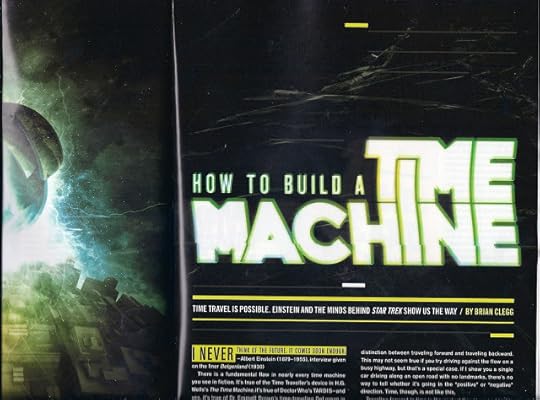


 Okay, not necessarily what you were thinking of, but that's definitely my photo and you can take my word for it that it's a cutting from Playboy, specifically the edition shown here.
Okay, not necessarily what you were thinking of, but that's definitely my photo and you can take my word for it that it's a cutting from Playboy, specifically the edition shown here.I must confess that I have never bought a copy of Playboy (no, honestly), so I was always very dubious about those people who claimed that they only bought it for the articles - but I must admit there was a lot more text in it than there were dubious photographs (and they were relatively tasteful). And, of course, all the great writers had pieces published in this august journal.
As the 'playbill' intro suggests, what is featured is a piece adapted from How to Build a Time Machine , so if you're a regular Playboy reader (for the articles, of course), you can get a bit of a preview of some of the material on offer. They've done quite a dramatic job with the opening spread, as you'll see with part of it below (though the real thing looks more impressive). I don't know if they have different versions of the magazine worldwide, but it's certainly in the US edition.

Published on December 13, 2011 08:28
December 12, 2011
Goodbye Mr Higgs
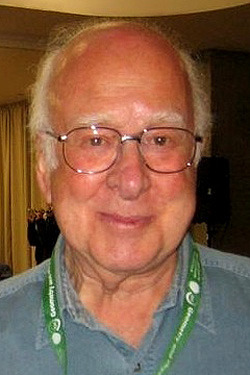 The only Higgs definitely spottedOr not. There have been a lot of rumours flying around the physics world as to whether or not the latest batch of info from CERN, released tomorrow, would include a sighting of the infamous Higgs boson. Frankly, as rumours go they don't have the same bite as a good sex scandal, but, hey, this science.
The only Higgs definitely spottedOr not. There have been a lot of rumours flying around the physics world as to whether or not the latest batch of info from CERN, released tomorrow, would include a sighting of the infamous Higgs boson. Frankly, as rumours go they don't have the same bite as a good sex scandal, but, hey, this science.The search for the Higgs is, of course, one of the main justifications for building the LHC. This is a hypothetical particle that may be responsible for giving some of the other particles their mass. But something that the newspapers don't seem to grasp is that the LHC would be just as much a success if it showed that the Higgs doesn't exist. Personally, I'd prefer it if it doesn't.
There are bits of physics which have a kind of neat, natural simplicity. This doesn't necessarily mean that the maths is simple. I would include the notoriously tricksy general relativity in this class. But quite a lot of the more recent physics depends very heavily on complex, intertwined sets of mathematical conjecture - and I really don't like that. My not liking it doesn't make it wrong, but I would prefer it if the whole tangled structure was brought crashing down and someone came up with a more satisfying solution.
So part of me will be happy if the Higgs gets pinned down, because at least we will be making progress - but that happiness will be accompanied by a deep sigh. Because the alternative, whatever it turns out to be, could be more exciting - and much more approachable. Is that irrational? Quite possibly. But it doesn't stop me hoping that they don't find the Higgs boson.
Image from Wikipedia
Published on December 12, 2011 08:04
December 9, 2011
Reach for the aqua fortis
 It's Royal Society of Chemistry podcast time again.
It's Royal Society of Chemistry podcast time again.Although chemists can devise some impressively catchy names –'photon', for example was coined by the chemist Gilbert Lewis – the standard naming conventions of chemistry can be a little dull. Nitric acid seems an uninspiring name for such a powerful compound. The old name 'aqua fortis' – literally strong water – has a much more appealing ring to it. Have a listen to find out more about this hugely important industrial compound.
Published on December 09, 2011 08:26
December 8, 2011
Back to the Future
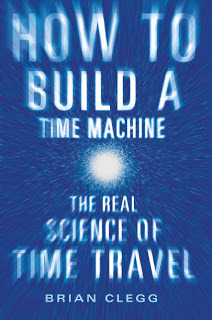 I know I've mentioned it a bit already, but I'm delighted to say that my latest book,
How to Build a Time Machine
is now published in the US and available in all good book stores/online. You can read more about it/buy a copy if so inclined at its web page. It also has a Facebook page for those interested/who want to discuss it and the physics of time travel.
I know I've mentioned it a bit already, but I'm delighted to say that my latest book,
How to Build a Time Machine
is now published in the US and available in all good book stores/online. You can read more about it/buy a copy if so inclined at its web page. It also has a Facebook page for those interested/who want to discuss it and the physics of time travel.Until recently, travelling through time seemed little more than fantasy. But quantum theory and particularly relativity open up ways to make time travel possible - and I still find it remarkable that no physical law prevents it.
How to Build a Time Machine explores our best understanding of time but really concentrates on how to manipulate it. There's the story of a time traveller's convention where no one turned up, and a tour through the remarkable possibilities of real time travel that emerge from quantum entanglement, superluminal speeds, neutron star cylinders and wormholes in space. There's even a physics professor who believes it's possible to build a working general relativity time machine on the desktop. I think it's just a fascinating subject.
 If anyone in the UK fancies a copy, I'm afraid it doesn't come out here until January (as Build Your Own Time Machine) - but it can already be pre-ordered from Amazon, via the book's web page.
If anyone in the UK fancies a copy, I'm afraid it doesn't come out here until January (as Build Your Own Time Machine) - but it can already be pre-ordered from Amazon, via the book's web page.It's a bit soon for reviews (except those sent through a time machine), but here's a couple of early comments:
Brian Clegg conjectures on the world of time and space travel and brings it all beautifully down to earth. Brilliant. - Johnny Ball
A solid overview of some of the quirkier corners of physics, with an entertaining connection to pop culture. - Kirkus Reviews
Published on December 08, 2011 09:14
December 7, 2011
Spot on Monbiot
If I'm honest,George Monbiot has not always been my favourite environmental writer. Sometimes in the past he has come across as po-faced and impractical in his ideas. But I wholeheartedly support his Guardian article on Tuesday supporting nuclear energy.
He points out the vast damage the anti-nuclear lobby is doing to the environment. How, for example, the knee-jerk panic of the Germans shutting down their nuclear programme will result in an extra 300 million tonnes of carbon dioxide being pumped into the atmosphere between now and 2020 alone.
He is also brave to point out at least two significant examples of totally spurious information being used to bolster the anti-nuclear cause. One is from an individual selling 'anti-radiation' pills whose claims have been exposed as false, yet whose 'findings' are widely used by anti-nuclear protestors. Another is the ludicrous statistics from Chernobyl, again brandished by the campaigners, claiming amongst other things that deaths from cirrhosis of the liver were caused by the nuclear accident. I was a trustee of a charity working in Belarus, and I can assure you that a much more obvious cause is by far the biggest medical threat there, not radiation.
I love the way Monbiot aligns anti-nuclear protestors with supporters of homeopathy and anti-vaccine campaigners. When misused it's exactly the same kind of dangerous woo. Great stuff, George.
He finishes with details of a fantastic sounding reactor that can produce energy safely and in large quantities from nuclear waste. While I can't believe it's quite the no-brainier he suggests, it sounds amazing. My suspicion is that it will be expensive, as otherwise the government would be biting people's hands off to get it. Yet it certainly sounds the way forward.
He points out the vast damage the anti-nuclear lobby is doing to the environment. How, for example, the knee-jerk panic of the Germans shutting down their nuclear programme will result in an extra 300 million tonnes of carbon dioxide being pumped into the atmosphere between now and 2020 alone.
He is also brave to point out at least two significant examples of totally spurious information being used to bolster the anti-nuclear cause. One is from an individual selling 'anti-radiation' pills whose claims have been exposed as false, yet whose 'findings' are widely used by anti-nuclear protestors. Another is the ludicrous statistics from Chernobyl, again brandished by the campaigners, claiming amongst other things that deaths from cirrhosis of the liver were caused by the nuclear accident. I was a trustee of a charity working in Belarus, and I can assure you that a much more obvious cause is by far the biggest medical threat there, not radiation.
I love the way Monbiot aligns anti-nuclear protestors with supporters of homeopathy and anti-vaccine campaigners. When misused it's exactly the same kind of dangerous woo. Great stuff, George.
He finishes with details of a fantastic sounding reactor that can produce energy safely and in large quantities from nuclear waste. While I can't believe it's quite the no-brainier he suggests, it sounds amazing. My suspicion is that it will be expensive, as otherwise the government would be biting people's hands off to get it. Yet it certainly sounds the way forward.
Published on December 07, 2011 08:27
December 6, 2011
It's too soon
 A Christmas tree (not this year) plus reindeer substituteI can't say I'm overwhelmed by the way people seem to be decorating their houses earlier and earlier for Christmas. I must admit I'm extreme. Given a free hand I wouldn't put anything up until a week before, but I have to give way to family pressure and go for a fortnight before. However I was quite surprised how many Christmas decorations I saw on houses in November.
A Christmas tree (not this year) plus reindeer substituteI can't say I'm overwhelmed by the way people seem to be decorating their houses earlier and earlier for Christmas. I must admit I'm extreme. Given a free hand I wouldn't put anything up until a week before, but I have to give way to family pressure and go for a fortnight before. However I was quite surprised how many Christmas decorations I saw on houses in November. Days-to-Christmas-ometerIt's not that I'm against Christmas jolity. And I must admit our days-to-Christmas-ometer does go up at the start of December. But I think there are good arguments for not decorating too early:
Days-to-Christmas-ometerIt's not that I'm against Christmas jolity. And I must admit our days-to-Christmas-ometer does go up at the start of December. But I think there are good arguments for not decorating too early:If you do, you've given in to the shopkeepers. There was a time when no one would have decorations up this early. But as shops have pushed back the point they go into Christmas mode sooner and sooner, so houses have started to get their fairy lights out of the loft at an earlier date. I think we should stand up for our right not to be hustled into Christmas decor too soon.If you have a real tree it will be looking pretty sad by Christmas Day. This is, after all, the start of Christmas, and more to the point, the day when you are likely to spend more time in proximity to your Christmas tree than any other. Remember it has to last another 12 days after this. Get it at the start of December and it will be balding by Christmas Day.You can only sustain so much 'specialness'. If the decorations are up all through December they have become everday by the 25th. The whole point is to make Christmas special, but there's a real danger it just becomes part of the wallpaper.So give it a thought. Let's have a campaign for a real Christmas and not an extended retail period.
Published on December 06, 2011 08:30
December 5, 2011
Strangely pleasant
 Now here's a challenge. I quite often write a bit of a blog post when an idea occurs to me, then fill it in later. Thanks to Blogger's mobile app, I can do this anywhere, tapping it in on my phone. So I'll write a title and a couple of lines of text that summarize the idea, then fill in the details later.
Now here's a challenge. I quite often write a bit of a blog post when an idea occurs to me, then fill it in later. Thanks to Blogger's mobile app, I can do this anywhere, tapping it in on my phone. So I'll write a title and a couple of lines of text that summarize the idea, then fill in the details later.This particular post started that way, but with a difference. All I wrote was the title. And I can't for the life of me remember what it was supposed to be about.
It certainly wasn't about the sensation you get when you pull a piece of dry skin off yourself, though I do find this strangely pleasant. (I still remember when, age 10, I broke my arm and after the plaster came off the entire arm was covered in dry skin. Heaven.)
Nor was it about the slightly related pleasure that comes from an unopened jar of instant coffee. You take off the lid and there underneath is that pristine seal, waiting to be broken through. For some reason I remember discussing this with someone I used to work with at British Airways (I don't suppose you remember, Sue), well over 20 years ago. We both agreed about the pleasure, but then discovered it was from a totally different action. Mine was to run the end of a spoon around the edge, crisply slitting it open. Hers was to attack it with a spoon, bashing dramatically through. (Freudians have a field day. But remember psychoanalysis has no scientific basis.)
So what did it concern? Junk food? The peace that sometimes unexpectedly turns up during the day? Cadbury's Whole Nut? I really have no idea. Perhaps you have some thoughts...
Published on December 05, 2011 08:11
December 2, 2011
Some different Christmas music
 It's that time of year when, should you venture into a shopping mall or supermarket, you will be bombarded with Christmas music. Similarly the radio stations be increasingly groaning with Christmas tunes. Now, I like Christmas music. And I can't be humbuggy enough to point out that it's currently Advent, and Christmas doesn't start until December 25th. For some reason, Christmas music is all about anticipation. But I just wish they pumped out a bit more variety.
It's that time of year when, should you venture into a shopping mall or supermarket, you will be bombarded with Christmas music. Similarly the radio stations be increasingly groaning with Christmas tunes. Now, I like Christmas music. And I can't be humbuggy enough to point out that it's currently Advent, and Christmas doesn't start until December 25th. For some reason, Christmas music is all about anticipation. But I just wish they pumped out a bit more variety.There are about 10 Christmas carols and 10 Christmas songs (please, not Slade!) that will get circulated over and over again. But it really doesn't have to be like this. I try to buy myself a new CD of Christmas carols every year, and this year went for this one - Fear and Rejoice, O People. It's mostly quite modern stuff (in the sense of post 1900), but nothing too weird.
There's a good mix of really top notch numbers, from the moving Howells Sing Lullaby that opens the disc to Tavener's hypnotic A Hymn to the Mother of God at the end. Generally the performances from St John's College Cambridge under Christopher Robinson are excellent, though the solo trebles are perhaps lacking in a little welly. The inevitable Rutter is one of his most subtle, There is a flower. There are two of Robinson's own carols - I preferred his traditional Hereford Carol, though Fear and Rejoice is interesting. Two lesser known treats are Geraint Lewis's Howells-like A little hymn to Mary and Arthur Oldham's Remember, O thou man, which has become one of my favourite choir carols since singing it at the Oxford University Physics Department Carol Service a couple of years ago.
Overall I really liked it. You can hear samples of the tracks at Amazon.co.uk and Amazon.com. If you want to stretch your Christmas music experience there's a whole range of recommended CDs here, from traditional carols to quite challenging modern stuff.
Published on December 02, 2011 09:58
December 1, 2011
Flipping coins!
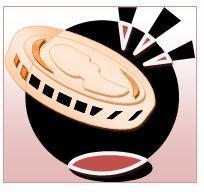 Thanks to Peet Morris for this excellent example of probability running counter to common sense.
Thanks to Peet Morris for this excellent example of probability running counter to common sense.Imagine I have a huge stack of coins and flip them one after another. These are fair coins, with a 50:50 chance of coming up heads or tails.
First of all I flip the coins one after another (leaving the flipped coins on the table) until the sequence H T H comes up. At that point I stop and count the coins. Then I repeat this experiment many times.
For the second part I again flip the coins, leaving them on the table, until the sequence H T T comes up. At that point I stop and count the coins. Then I repeat the experiment many times.
On average would you expect it to take more flips to produce H T H, more flips to produce H T T or the same number of flips?
Common sense says this is pretty obvious. It's the same number of flips. And certainly if I take three coins and flip them, there's the same chance of H T H or H T T coming up. But, remarkably, things are different in the experiment above. On average you will take fewer flips to produce H T T than you would to to produce H T H.
Just take a moment to think how that might be possible.
Here's the sneaky probabalistic component that isn't obvious: in both cases, you need the sequence H T to come up first. Now imagine that you then get the wrong face on the next flip. So if you were looking for H T H you actually get H T T and vice versa. With this starting point, H T T has an advantage. If you were looking for H T T, and actually got H T H, then the last coin in the sequence is H. So you only need T T to complete your sequence. If you were looking for H T H and actually got H T T, then the last coin the sequence is T, so you need all three of H T H to complete the sequence.
The reason H T T does better is that the sequence of faces that isn't correct ends in the face that starts your sequence. For H T H, the wrong result produces a bad starting point, so you have to run the exercise that bit longer.
Published on December 01, 2011 09:07
November 30, 2011
Relativity can be riveting
Looking back a long (long) way to my physics degree, special relativity was one of my favourite subjects. It's weird and wonderful enough to be amazing, but (unlike general relativity) the maths is relatively easy. Don't worry though, I'm not going to throw equations at you - I just wanted to share one of the remarkable paradoxes of relativity.
I've seen paradoxes defined as contradictions that can't be true, but I think a much more appropriate definition for physics is situations that appear to involve a mind-boggling contradiction, that the physics tells us really is the way things are. And special relativity is full of them.
This particular one below I hadn't seen before, and I picked up from Andrew Stearne's book The Wonderful World of Relativity . (This sounds like a children's book, but actually it's a relativity primer that is probably best appreciated by those about to start a physics course at university, as it's a bit too textbooky for the general reader.)
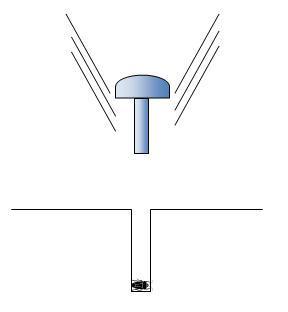 Here's the scenario. We've got a table with a 10mm deep hole in it. At the bottom of the hole a beetle is happily beetling about, unaware that we are about to fire a rivet into the hole. The good news is that the shank of the rivet, the bit that will go into the hole, is only 8mm long, leaving room for our (rather small) beetle to feel safe and snug.
Here's the scenario. We've got a table with a 10mm deep hole in it. At the bottom of the hole a beetle is happily beetling about, unaware that we are about to fire a rivet into the hole. The good news is that the shank of the rivet, the bit that will go into the hole, is only 8mm long, leaving room for our (rather small) beetle to feel safe and snug.
Unfortunately, though, the rivet is fired towards the table at a fair percentage of the speed of light. It's somewhat typical of this book that all it tells us about the speed is that γ is 2, which doesn't really give you an idea of how fast the rivet is going, but if my back of an envelope calculations are right, this is around 0.87 times the speed of light. Quite a fast rivet, then.
Now one of the weird effects of special relativity is that an object moving at high speed is squashed up in the direction of travel as seen by an observer. So from the bug's viewpoint the rivet won't by 8mm long, it will be just 5mm long. 'Wow,' thinks the bug, 'what was I worried about?' But before it sits back and starts reading the newspaper, there's something it needs to consider. Relativity works both ways. From the rivet's viewpoint, it's not the rivet that's moving, it's the table. This means from the rivet's view it remains 8mm long - but the hole is contracted and is now only 5mm deep. Squish goes bug.
So what really happens? (I use 'really' loosely. Let's face it, Wickes does not sell a 0.87 times the speed of light rivet gun.) Is the beetle somehow both live and dead, in the manner of the famous quantum cat? Sadly no. It's squish all the way.
Let's follow the event from the beetle's viewpoint. Down comes the rivet and slams into the table. At the moment before the impact the rivet is still just 5mm long as far as the bug is concerned. But here's the thing. Just because the head of the rivet has come to a sudden stop doesn't mean the whole rivet does. A wave has to pass along the rivet to its end saying 'Stop!' The end of the rivet will just keep on going until this wave, typically travelling at the speed of sound, reaches it. That fast-moving end will crash into the beetle long before the wave arrives. It will then send a counter wave back up the rivet and after a degree of shuddering will eventually settle down as an 8 mm rivet in a 10 mm hole. Too late, though, for that bug.
Isn't physics great?
I've seen paradoxes defined as contradictions that can't be true, but I think a much more appropriate definition for physics is situations that appear to involve a mind-boggling contradiction, that the physics tells us really is the way things are. And special relativity is full of them.
This particular one below I hadn't seen before, and I picked up from Andrew Stearne's book The Wonderful World of Relativity . (This sounds like a children's book, but actually it's a relativity primer that is probably best appreciated by those about to start a physics course at university, as it's a bit too textbooky for the general reader.)
 Here's the scenario. We've got a table with a 10mm deep hole in it. At the bottom of the hole a beetle is happily beetling about, unaware that we are about to fire a rivet into the hole. The good news is that the shank of the rivet, the bit that will go into the hole, is only 8mm long, leaving room for our (rather small) beetle to feel safe and snug.
Here's the scenario. We've got a table with a 10mm deep hole in it. At the bottom of the hole a beetle is happily beetling about, unaware that we are about to fire a rivet into the hole. The good news is that the shank of the rivet, the bit that will go into the hole, is only 8mm long, leaving room for our (rather small) beetle to feel safe and snug.Unfortunately, though, the rivet is fired towards the table at a fair percentage of the speed of light. It's somewhat typical of this book that all it tells us about the speed is that γ is 2, which doesn't really give you an idea of how fast the rivet is going, but if my back of an envelope calculations are right, this is around 0.87 times the speed of light. Quite a fast rivet, then.
Now one of the weird effects of special relativity is that an object moving at high speed is squashed up in the direction of travel as seen by an observer. So from the bug's viewpoint the rivet won't by 8mm long, it will be just 5mm long. 'Wow,' thinks the bug, 'what was I worried about?' But before it sits back and starts reading the newspaper, there's something it needs to consider. Relativity works both ways. From the rivet's viewpoint, it's not the rivet that's moving, it's the table. This means from the rivet's view it remains 8mm long - but the hole is contracted and is now only 5mm deep. Squish goes bug.
So what really happens? (I use 'really' loosely. Let's face it, Wickes does not sell a 0.87 times the speed of light rivet gun.) Is the beetle somehow both live and dead, in the manner of the famous quantum cat? Sadly no. It's squish all the way.
Let's follow the event from the beetle's viewpoint. Down comes the rivet and slams into the table. At the moment before the impact the rivet is still just 5mm long as far as the bug is concerned. But here's the thing. Just because the head of the rivet has come to a sudden stop doesn't mean the whole rivet does. A wave has to pass along the rivet to its end saying 'Stop!' The end of the rivet will just keep on going until this wave, typically travelling at the speed of sound, reaches it. That fast-moving end will crash into the beetle long before the wave arrives. It will then send a counter wave back up the rivet and after a degree of shuddering will eventually settle down as an 8 mm rivet in a 10 mm hole. Too late, though, for that bug.
Isn't physics great?
Published on November 30, 2011 08:32



